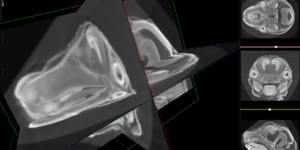
Carl Kesselman
Computer scientist Carl Kesselman, the co-inventor of open source grid software now widely used all over the world, received an honorary doctorate Jan. 9 from the University of Amsterdam.
The citation salutes his work. “Without doubt, he will enter history as one of the most important designers of the way in which data is gathered and processed both in academic experiments and in daily life.”Kesselman is the director of the Center for Grid Technologies at the USC Information Sciences Institute – where he is an ISI Fellow – and also holds an appointment as a research associate professor in the Viterbi School of Engineering department of computer science.
He and his longtime collaborator Ian Foster of Argonne Laboratory have spent the last decade developing the Globus Toolkit. a suite of open source software for distributed computer systems, freely available for use (and modification) by programmers.
Globus coordinates the use of geographically distant computers – their raw computing power, the data they contain, and the instruments controlled by them. The software addresses the security, data-management, execution management, resource discovery and other issues that arise from such sharing.
According to the honorary doctorate citation, this research “caused an extraordinary breakthrough in the complete infrastructure of information technology.
“Grid technology enables the construction of computer networks, which can function as virtual super-computers with great arithmetic capacities.
“In a grid, computers or clusters of computers are integrated into a completely new concept of data processing, which leads to more transparent access to all kinds of new data and services, and to special peripheral equipment such as particle accelerators and medical scanners. … ”
Globus is now part of numerous highly visible projects including the U.S. TeraGrid national computing infrastructure project and NEESGrid earthquake engineering system, the international LHC particle physics grid, and also major efforts in astronomy, genomics, and other fields.
Kesselman was introduced by UvA’s Peter Sloot, professor of Computational Science. In Amsterdam, in addition to receiving his degree, Kesselman also taught a masterclass on “The Grid: Motivation, Applications and Infrastructure.”

Published on January 11th, 2006
Last updated on August 9th, 2021













